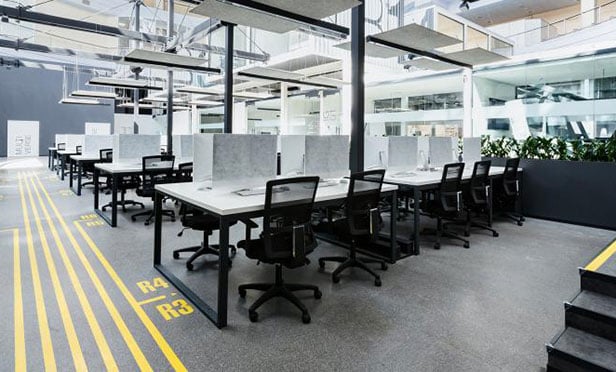
The beginning of 2025 has seen a flurry of major companies announce return-to-office mandates, adding to an expanding list of Fortune 500 companies issuing five-days-a-week edicts.
Gap Inc. is among the latest, ordering all of its corporate employees who live near an office to return Mondays through Fridays by September. The San Francisco-based apparel and accessories retailer announced last week that the remote work changes apply to all Gap offices — including its product development headquarters in New York City — and impacts the Gap, Athleta, Banana Republic, and Old Navy brands, according to the San Francisco Business Times.
Recommended For You
“Creativity thrives on in-person collaboration, innovation comes to life through live brainstorming,” a Gap Inc. spokesperson wrote in an email to the Business Times. “In an effort to foster an even stronger community across Gap Inc., beginning in February, employees located near an office have begun coming in more frequently with the goal of being back in the office five days a week by the fall.”
But are these corporate moves really necessary? A recent survey of more than 2,000 workers by two Harvard Business School professors suggests just how much employees value remote-work options. Respondents were asked if they would be willing to give up part of their salary to keep their work-from-home flexibility.
“While more than half of workers surveyed wouldn’t take a salary reduction, 40% said they would accept a pay cut of 5% or more,” according to professors Zoë Cullen and Christopher Stanton. “Another 9% of respondents would trade 20% or more of their salaries to avoid the office.”
The research paper, titled “The Rise of Remote Work: Evidence on Productivity and Preferences from Firm and Worker Surveys,” was published last fall in the Journal of Economics and Management Strategy.
The study and Gap’s recent announcement, not surprisingly, have generated plenty of discussion on LinkedIn.
“If you understand how you make money, then you understand what you need to get there,” wrote Ahmad Mansoor, a workforce strategy consultant in North Carolina. “And if you understand what you need to get there, then you understand what you need to ask from your workforce. And here’s a really important tip for everyone across any business in any industry: It has absolutely nothing to do with how long your employees can sit at a desk in an office building.”
“Employees are telling you what they want and what they would give up to get it!,” added Leila Bulling Towne, an executive coach in California. “So, why are so many leaders still pushing for return-to-office (RTO)? They say it’s about culture, collaboration, and connection. Those are valid reasons, sure. But I think it’s about FEAR. Fear that if they can’t see people working, the work isn’t getting done. Fear that their leadership is built on proximity, not actual influence. Fear that their role as a leader is more challenging when it’s no longer about walking the floor and checking in but building trust from a distance. Leadership should be about outcomes, not optics.”
The Harvard Business School paper appears to back up both of those assertions, noting that workers claiming productivity value remote work more.
“When considering self-reported productivity, workers who said they were least productive while working remotely were also least likely to sacrifice compensation,” Cullen and Stanton wrote. “Conversely, those who reported being even moderately productive were willing to accept a salary reduction to continue working outside the office.”
© 2025 ALM Global, LLC, All Rights Reserved. Request academic re-use from www.copyright.com. All other uses, submit a request to [email protected]. For more information visit Asset & Logo Licensing.







